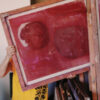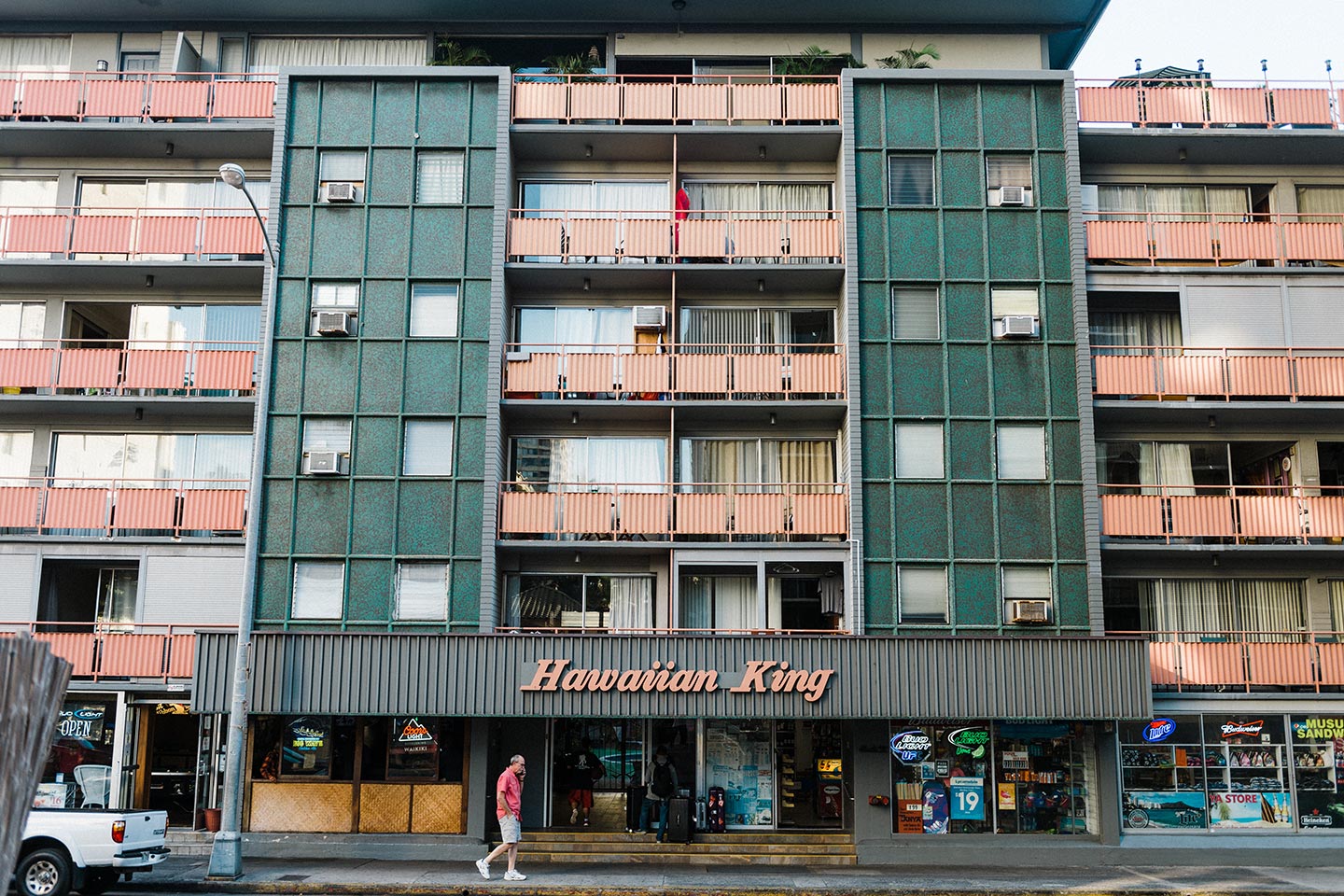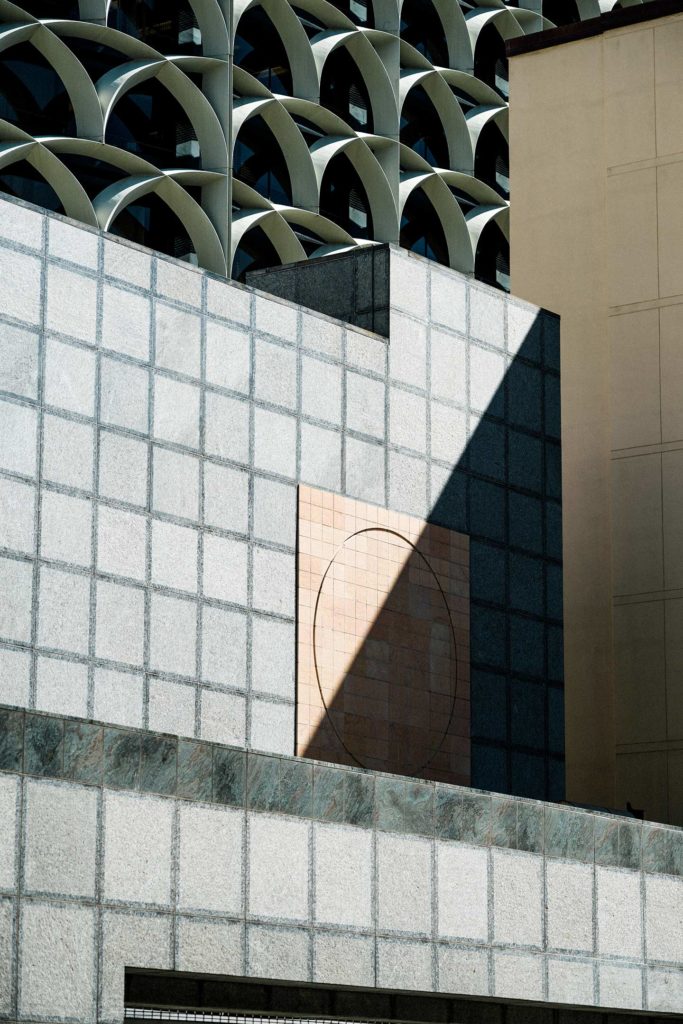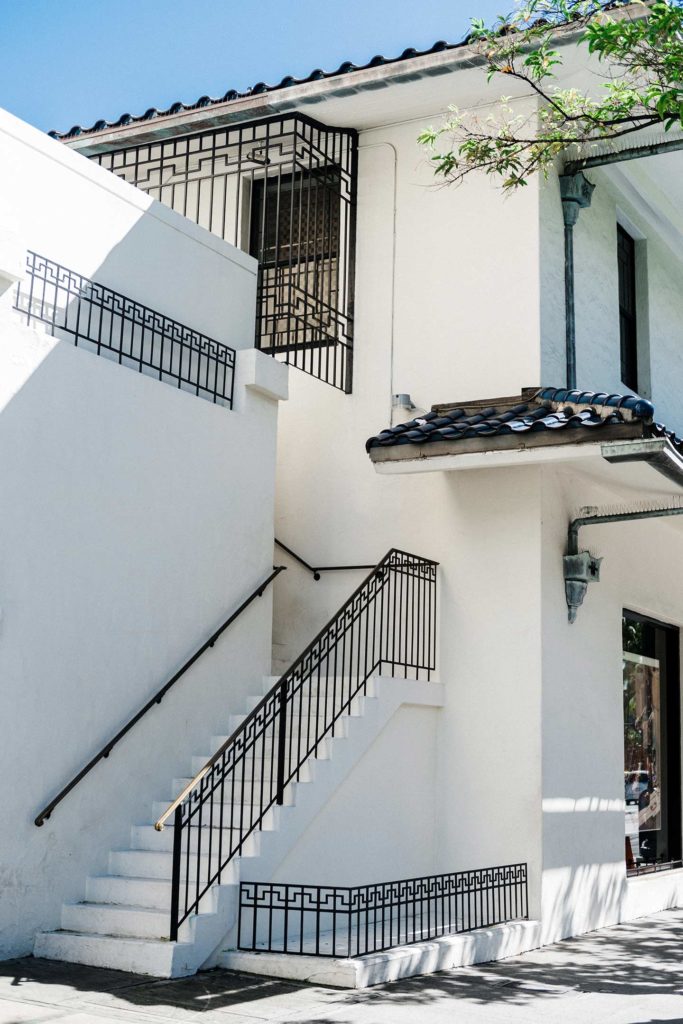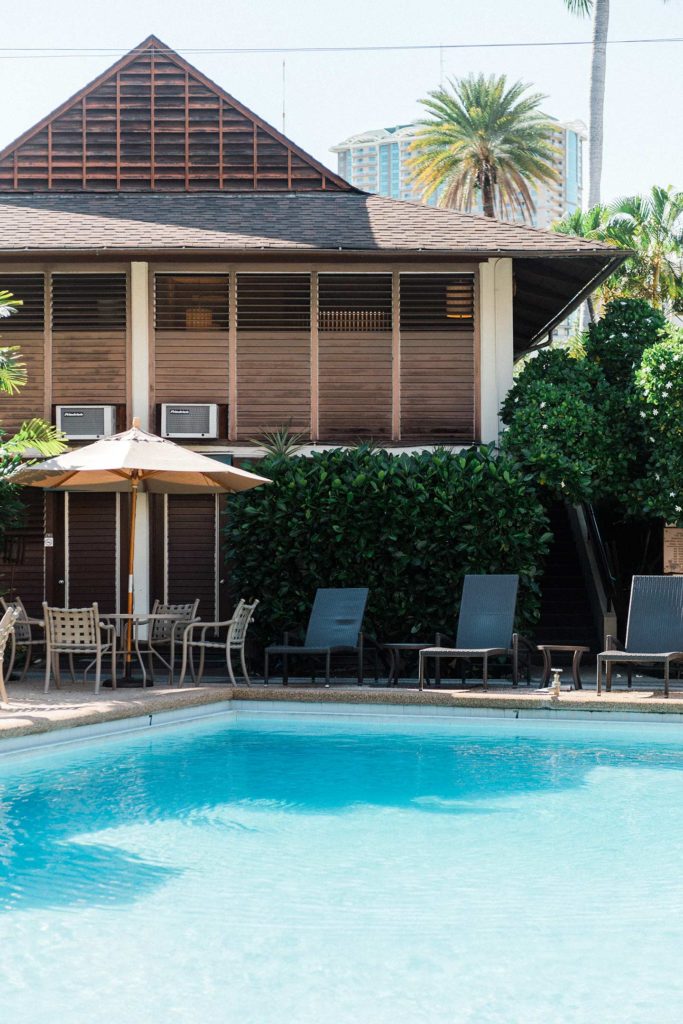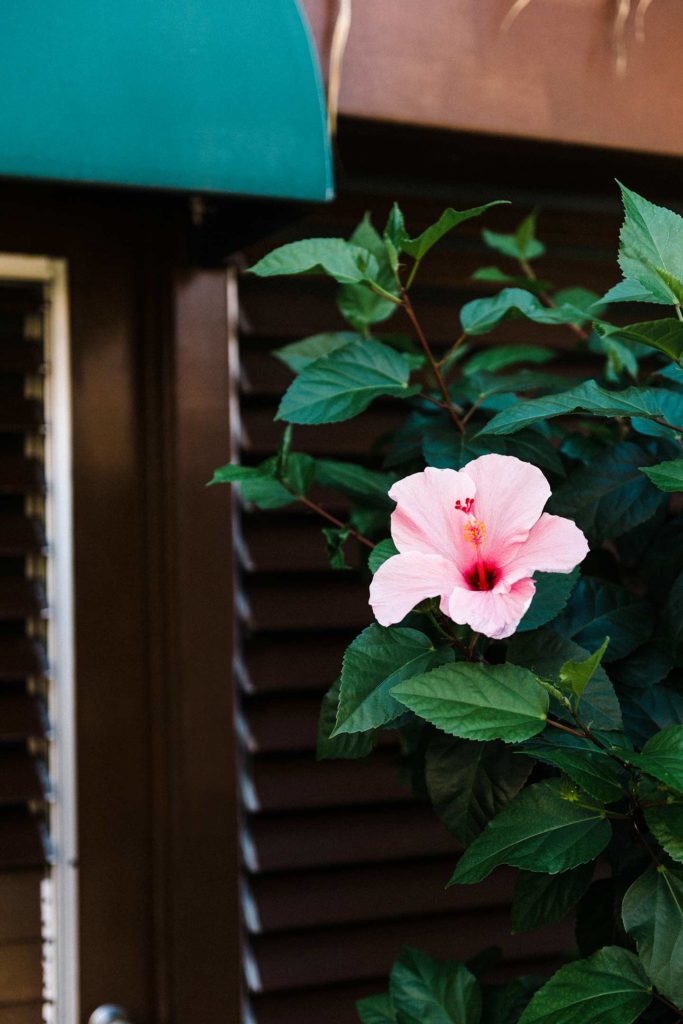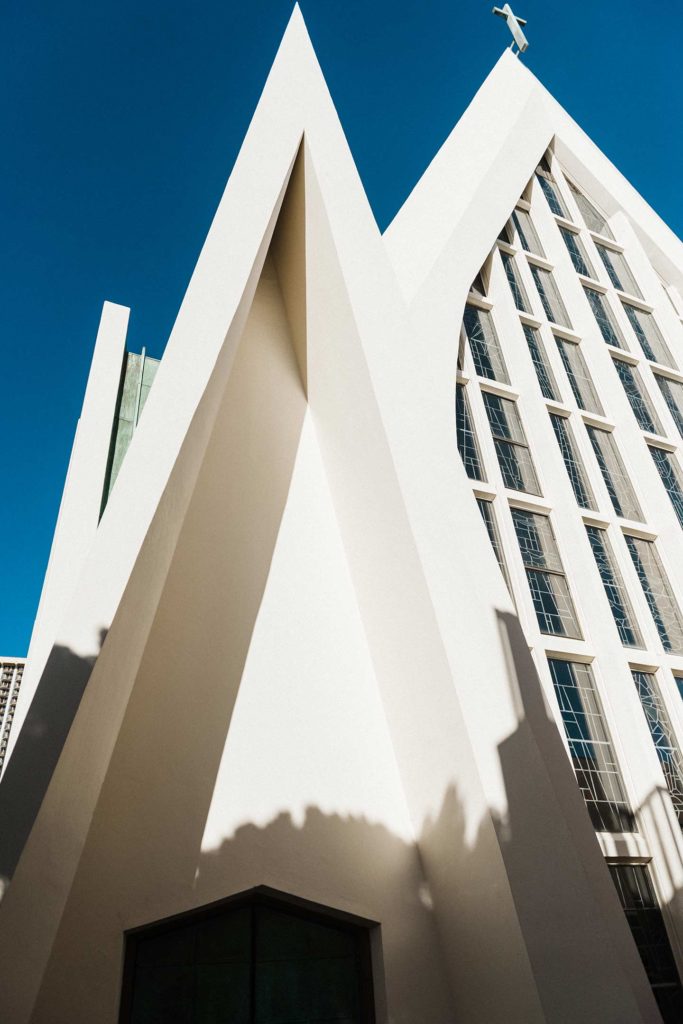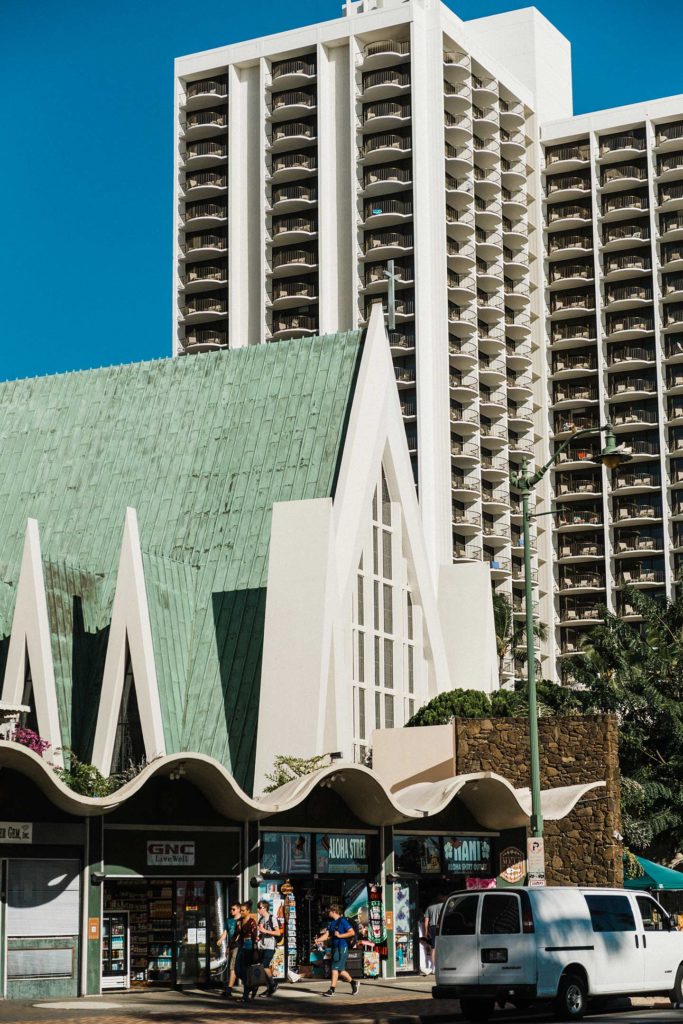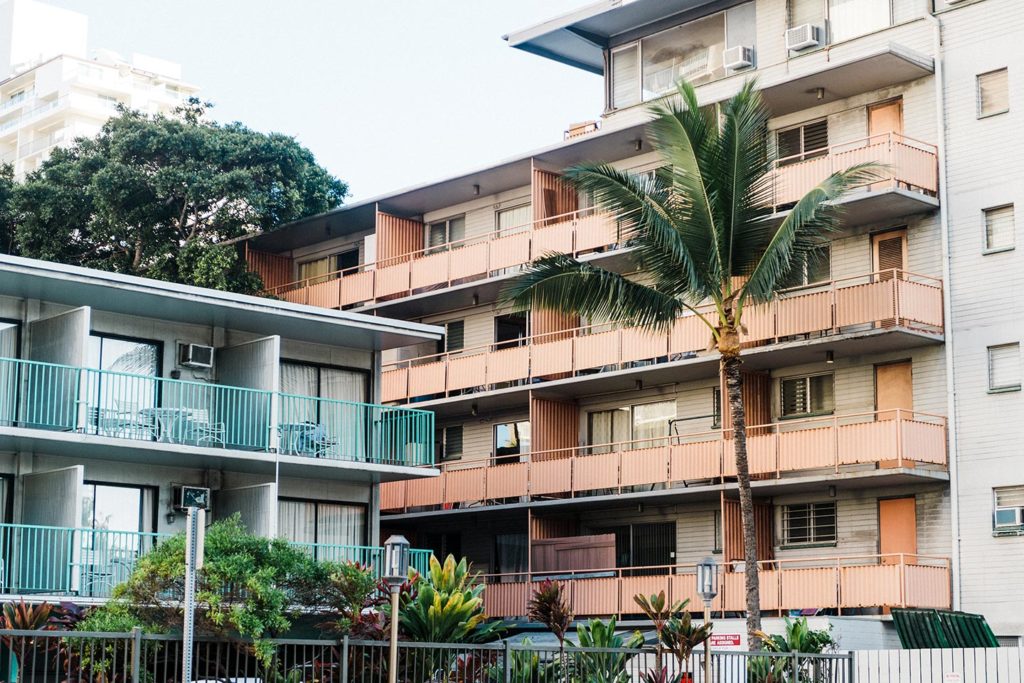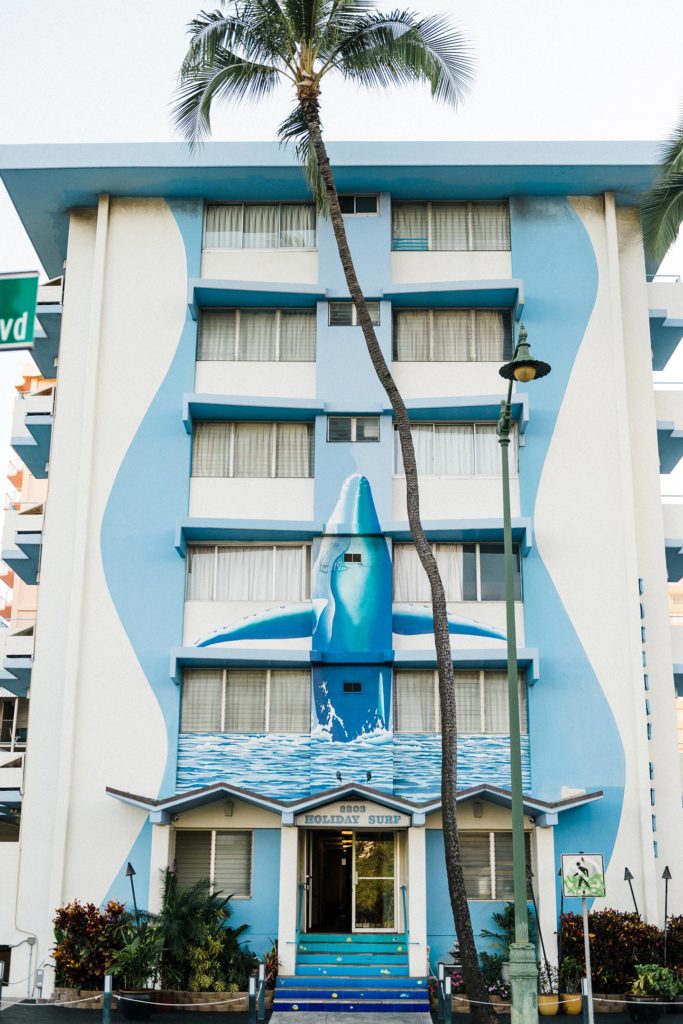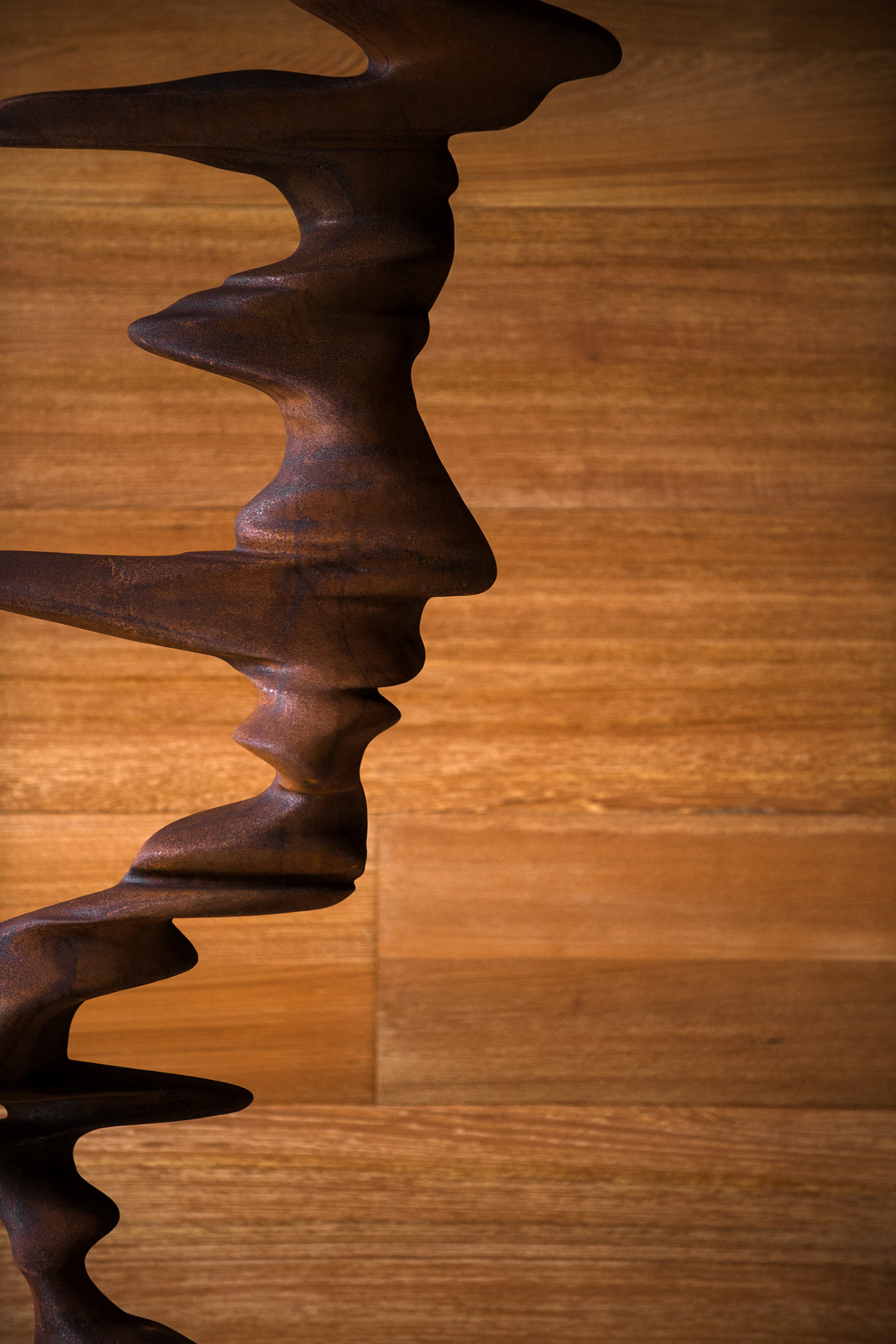Text by Timothy A. Schuler
Images by John Hook & Mark Kushimi
The sun is up, but it hasn’t yet reached the cluttered back streets of Waikīkī. Here, everything is bathed in a cool blue light. Seen from a distance, Honolulu’s famous beachfront strip appears as a homogenous blob of blocky beige towers, as if extruded from the sand, the overall effect one of bland repetition. But like most places, Waikīkī reveals itself slowly, haltingly.
A stroll through its streets is a walk through time, though not a linear one. With every step, it seems, you encounter a different era: the 1920s with its grand, ornamental architecture, or the 1950s with its tiki modernism.
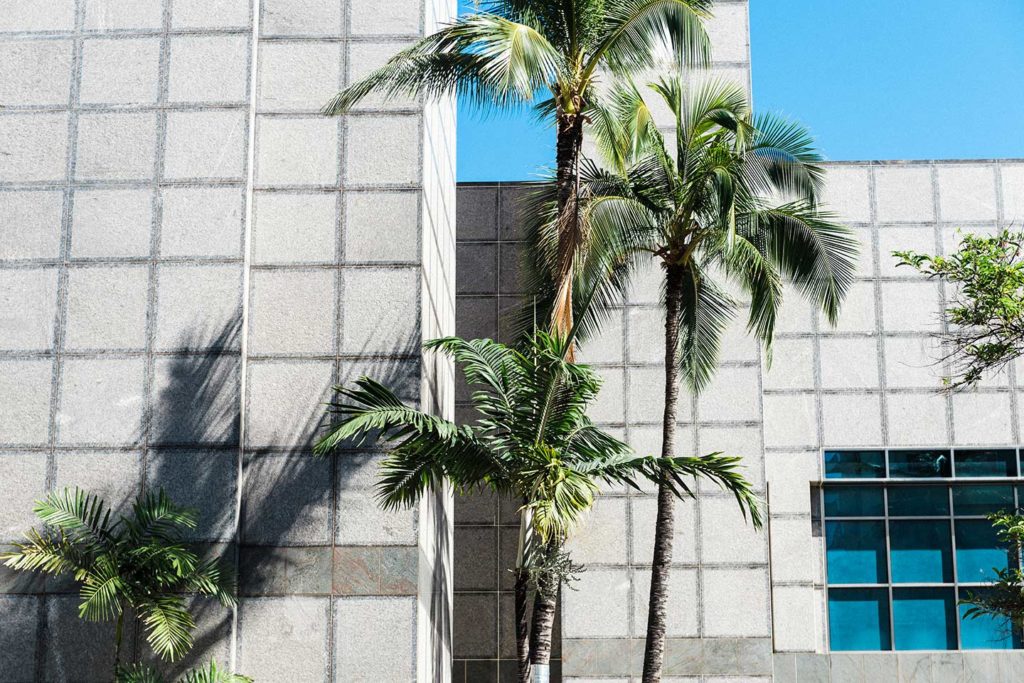
Waikīkī is and always has been many things. Its name means “spouting waters” and refers not to the ocean but to the stream-fed wetlands that made the area an agricultural hub even as members of the royal family built residences there.
The wetlands disappeared with the construction of the Ala Wai Canal in the 1920s, creating acres of prime beachfront property that soon were populated with hotels and taverns.
Since the late 1800s, Waikīkī has also been a place people have called home, slowly evolving into an urban neighborhood with a population of some 20,000 people and a tireless energy.
Not long ago a friend of mine, an architectural historian who lived in Hawai‘i for several years, sent me a note unbidden.
“People often clap back at Waikīkī as an inauthentic place, but I’ve never felt that way,” she wrote. “It’s walkable, and it’s dense, and personally, the combination of tall buildings and mountains gets to me.”
Some of her favorite buildings, like the Waikīkī Theater, have been demolished in recent years, she said, “but I’m pleased to see that most of the low-rise apartments still have character. Waikīkī should be a landmark district.”
“People often clap back at Waikīkī as an inauthentic place, but I’ve never felt that way. It’s walkable, and it’s dense, and personally, the combination of tall buildings and mountains gets to me.”
Unlike some tourist destinations, such as Palm Springs or Miami Beach, Waikīkī isn’t known for its architecture. And yet once upon a time, the area was the playground of the architectural vanguard. In 1957, Buckminster Fuller built one of his famous geodesic domes on the grounds of what is now Hilton Hawaiian Village.
The year before, George “Pete” Wimberly, who went on to design the Sheraton Waikiki—which, in 1971, was the largest resort in the world—had given Waikīkī its most iconic structure to date: the hyper-modern, tiki-flavored Waikikian Hotel, whose lobby featured a dramatic, hyperbolic paraboloid roof that curved in two directions and dipped nearly to the ground.
It was as bold as Waikīkī ever got, an outgrowth of post-World War II optimism and Hawai‘i’s increasing prominence in the American imagination.
In the 1960s, advancements in commercial air travel shortened the flight time from the West Coast to Hawai‘i from nine hours to less than five, making the islands more accessible than ever. Between 1960 and 1970, visitors increased sixfold and began staying for shorter periods.
If this glut resulted in more utilitarian architecture, it also changed what a hotel was. Large suites with full kitchens, once de rigeur, were no longer needed. Hotel rooms shrank accordingly and were perched higher and higher in the sky.
Many of Waikīkī’s iconic structures were torn down to make way for ever-larger resorts. The Waikikian closed in 1996, its fantastical lobby and restaurants demolished. Fuller’s dome, which had served as a nightclub and venue for performers like Don Ho, came down three years later.
Beachfront property reached such a premium that even tiny parcels were sold off for development. On the sliver of land in front of St. Augustine Church By the Sea, a relic of atomic-age architecture, were built a Burger King and an ABC Store, severing the church from the street and beachfront.
Still, a surprising amount of significant works remains. On Kalākaua Avenue, Wimberly’s Waikiki Galleria Tower from 1966, with its arching, tessellated, Escher-like façade, sits next to Hart Wood’s Asian-influenced G. Gump Building built 40 years earlier in 1927, now a store for Louis Vuitton.
Some of the seemingly unremarkable walk-up apartment buildings have architectural pedigrees of their own, like the uber-retro Darlani Apartments, designed by the architects who would later help realize the Hawai‘i State Capitol building.
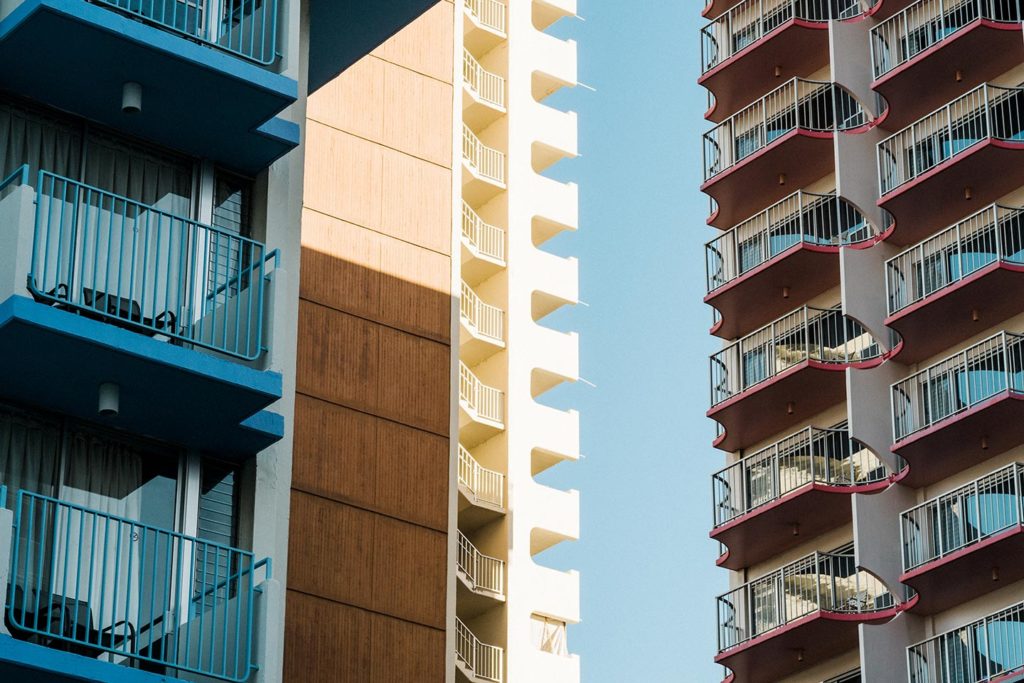
The neighborhood’s railings alone could fill a coffee table book. They come in every material (wood, steel, iron, concrete) and pattern (leaves, sails, surfboards) imaginable. They bend and wave and zig and zag. They are black, white, aquamarine. Like its ubiquitous breezeblocks or characteristic copper signage, Waikīkī’s banisters and balustrades are functional yet serve as stylistic flourishes.
At the Kaiulani Court Apartments on the corner of Ka‘iulani Avenue and Kūhiō Avenue, a breadfruit motif is rendered in black wrought iron.
Down the road, on Lau‘ula Street, a two-story building is adorned with subtle wood panels depicting banana leaves in relief.
Along with lava rock walls and cantilevered lānai—hallmarks of Hawai‘i’s tropical modernism—the railings are symbolic of the designer’s wish to represent the beauty of the islands in the built environment. They give Waikīkī a sense of self.
Today, the old Waikīkī is seeing something of a revival. Building on a worldwide interest in midcentury modern design, hotels like the Laylow and the Surfjack Hotel and Swim Club have rehabed buildings from the 1950s and 1960s, filling their lobbies with mod-inspired furniture and generating a newfound appreciation for Waikīkī’s midcentury modern architecture.
Last year, the Surfjack partnered with Docomomo, a preservation group devoted to midcentury modern design, to create a self-guided walking tour of some of Waikīkī’s most significant buildings, including the low-rise Beachside Apartments, designed in 1959 by pioneering local architect Ernest Hara.
Last fall, the Queen Emma Land Co. announced its plans to restore the Beachside Apartments, along with two other midcentury walk-ups on Kānekapolei Street.
Like a song full of samples, Waikīkī defies easy categorization, serving up continually surprising textures and juxtapositions. It is at its best when it embraces this multifaceted aspect of itself, its disparate worlds and clashing styles.
The old Waikīkī is not gone. It exists, in pockets alongside every other Waikīkī that has come before and after it, and each future Waikīkī that is yet to come.



